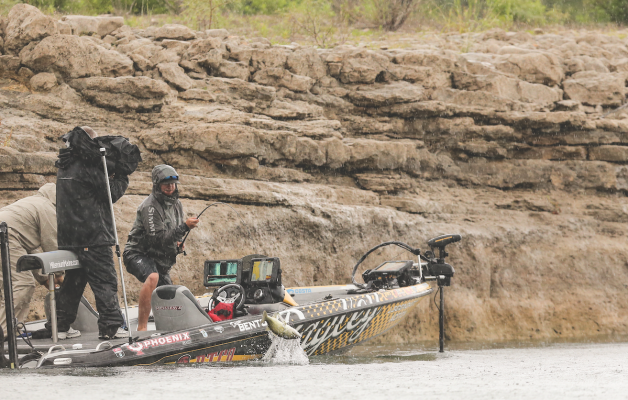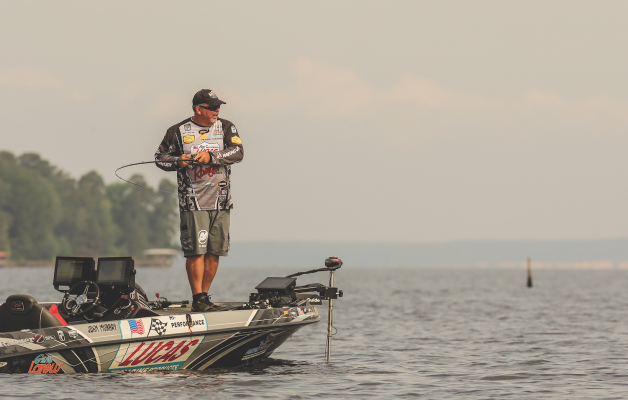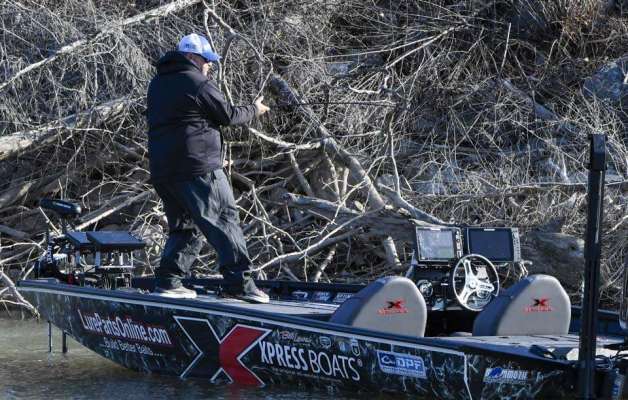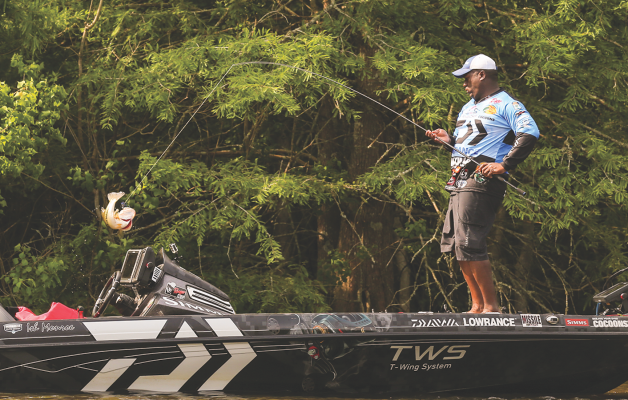
When the Bassmaster Elite Series pros arrived at Lake Texoma for the 2016 BASSfest tournament, the big lake was severely flooded, and the water level continued to rise throughout practice before cresting and starting to descend. For Tennessee pro Ott DeFoe, that presented a problem because as the tournament progressed each day, there were fewer of the green bushes he’d been flipping. His weights the first three days went from 18 pounds, 5 ounces to 12-0 to 11-5, and each day he dropped a few spots.
That’s when he went to the dead stuff and reclaimed some ground. “Those fish kept sliding out,” he recalled. “There was all of that thick green stuff, but there were also bushes out deeper. They had been covered the longest, so they were the first to die. Even though it wasn’t as attractive looking, it still offered good cover.” He sacked 15-1 on Day 4 and moved up to fifth.
The bass fishing textbook says live plants are the most productive, but sometimes the dead stuff is the best or only cover to ply. “Seventy-five percent of the time, I’m looking for something green,” said Florida pro Randall Tharp. “But when the dead stuff is going on, that’s the deal, and you usually can’t win any other way.” During a 2010 Bassmaster Southern Open on Lake Okeechobee, Tharp led the first two days before ultimately falling to fourth, behind fellow Florida hammers Chris Lane, Bobby Lane and Terry Scroggins. His pattern involved flipping dead hyacinths slowly.





